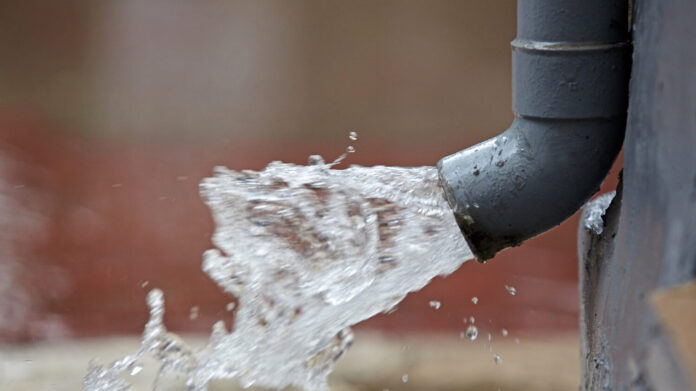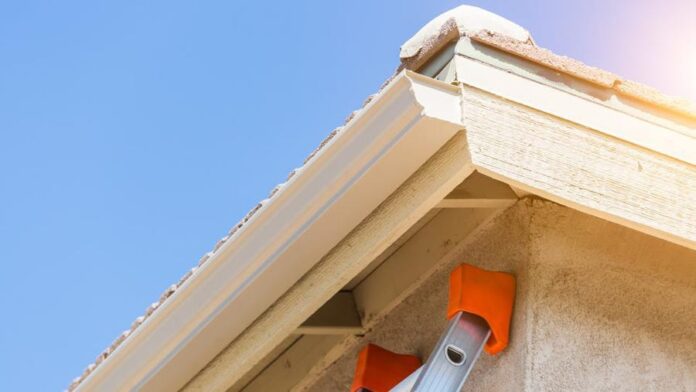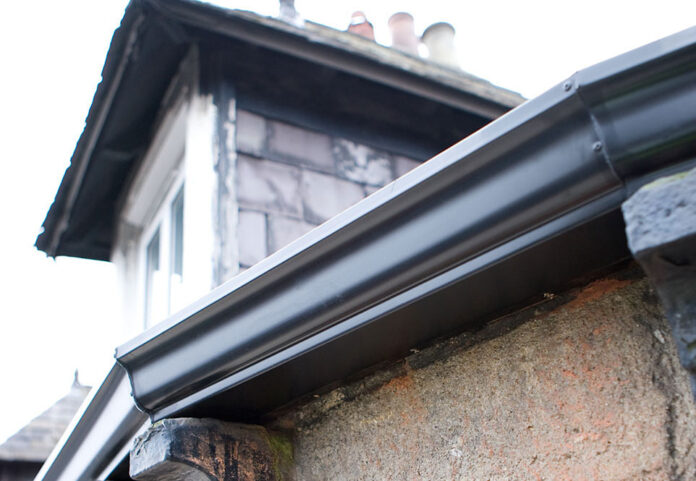Installing a new gutter system in your home can be a big investment. There are a number of different types, including seamless, slanted, and aluminum. You can also purchase downspouts, which are the drainage units that carry rainwater from your roof to your yard.
Cost
The cost to install a gutter depends on a number of factors. These include material, labor costs, and the size and complexity of the home. In general, larger homes will cost more. A gutter calculator is a good way to get a rough idea of how much your installation will cost.
You can find one online. It’s not a quote, however. It is based on the average material and labor costs. There are many styles of gutters. Some are more efficient than others. If you’re trying to decide on the best option for your home, you can consult a contractor for a custom solution.
Using a gutter screen can prevent debris from entering the gutter. This can help prevent clogs and water damage to your roofing. One of the easiest styles to install is aluminum. These are also inexpensive. However, they can be damaged in cold weather. Vinyl is another popular choice. They are lightweight and durable.
Another option is copper. While they are more expensive, they are also more durable. Compared to vinyl, they are harder to install. Choosing the right material for your project can make a huge difference in the overall cost. Galvanized steel is a durable and reliable option.
Adding downspouts to your home can help remove standing water. They can be installed by a professional like http://www.guardianeaves.com or you can do it yourself. Typically, you’ll need to add these every 30 to 40 feet. Downspout extensions can also help prevent erosion of the landscape around your home.
Downspouts

The downspout is an important part of a gutter drainage system. It moves water away from the house, which helps prevent moisture problems. A downspout can also help protect your foundation.
Downspouts can be round, rectangular, or a combination of the two. Choosing the right downspout depends on the size of the home, the design of the gutter, and the amount of water that needs to be drained.
Depending on the material, downspouts can also be designed in a number of shapes. They can be seamless, which means they have a single piece of metal that can be joined with the existing gutter structure.
If you want to make the most of your downspout, consider installing a downspout extension. This small pipe, which is usually aluminum or plastic, connects the downspouts on many homes. When installed correctly, it helps optimize the system.
During rainy weather, downspouts direct water into the downspout outlet. Often, the downspout will run vertically along the side of a house. With an extension, water will be diverted away from the home, reducing the risk of flooding.
Seamless gutters

Gutter systems are important components of a home’s exterior drainage system. These help move water away from the foundation and keeps the yard looking good. They also protect the roof from the elements. A poorly installed gutter can lead to damage or back-ups.
There are a variety of materials used to make gutters. Some of these include copper, steel, and aluminum. This makes it essential to know what material you are choosing for your new gutters.
There are also a few things to consider before installing seamless gutters.
The biggest is the material. Seamless gutters are more expensive to buy and install than standard gutters. That is because they are custom-built for your home. Depending on the material, they can cost between $4 and $30 a linear foot. Many homeowners choose based on the look of their house. Another factor is the cost.
Slanted sections

If you’re installing a new gutter system, you’ll need to be aware of some of the slanted sections. The correct slant will make the system more efficient, and help prevent problems down the road. This article will outline the basics.
You’ll need to measure down at least 20 feet. This will give you a good idea of the length of the run. There are several methods for measuring, but the most accurate are using a measuring tape and a straight edge.
There are also a number of ways to connect the gutters. One method is to install an apron. To do this, you’ll need to make sure your brackets are secure, and use lag screws that are rubbed with soap before driving them in. They should be at least 2 inches long.
Another method is to use a sheet metal screw. These can be either a lag or threaded screw. Make sure your screws are long enough to penetrate your rafters, but short enough to not nick the roof.
In addition to securing the components, you’ll need to seal them. This can be done with a pop rivet, seam sealer, or a combination of the two. Using a pop rivet, you’ll need to do a bit of shearing to get the job done, and you might need some help. However, a pop rivet is easier to do, and looks much nicer.
Aluminum gutters

Aluminum gutters are one of the most popular choices in residential home water mitigation. They are easy to install and come in a wide variety of shapes and sizes. The gutters are lightweight, durable, and able to handle heavy rains. If you’re looking for a gutter that will last for decades, aluminum is the perfect option.
Aluminum is a more affordable material for residential gutters, but you’ll want to make sure you’re getting the best value for your money. For instance, steel systems are a little more expensive, but they’re also sturdier and less likely to rust.
Another thing to consider is the size of your gutters. A six-inch-wide section will have more space for water than a five-inch section. Depending on the size of your house, you may need to have a downspout installed in conjunction with your new gutters.






